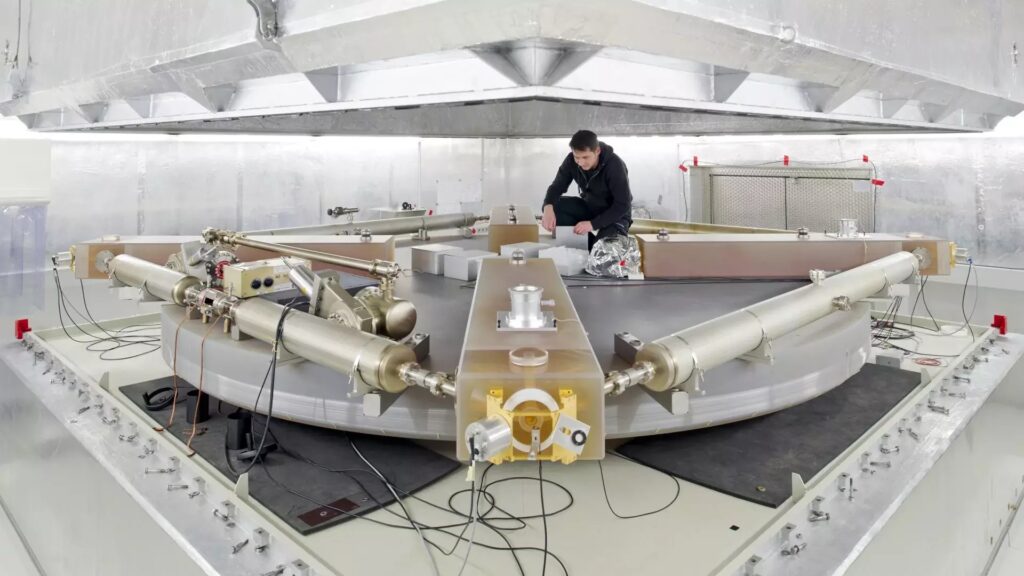More precisely than ever before, scientists at the Technical University of Munich (TUM) have been able to measure the Earth’s rotation. There, the ring laser has been improved to the point where it can offer daily current data, which was previously not achievable at comparable quality levels.
Scientists claim that the measurements will help with climate research and improve the accuracy of climate models in addition to being used to determine the Earth’s position in space.
The Earth revolves on its axis, moving at slightly different speeds across space. Also, the planet’s rotational axis is not perfectly stable; it wobbles. This is because the earth is composed of various components, some of which are liquid and some solid. Thus, the Earth’s interior is in perpetual motion. Measurement tools such as the TUM ring laser can be used to identify these mass transfers that either accelerate or halt the planet’s rotation.
With four mirrors fully enclosed in a ceran body known as the resonator, ring lasers have a closed, square beam path. This prevents temperature variations from altering the path’s length. Laser beam excitation is achieved by a mixture of helium and neon gases inside the resonator, which rotates one clockwise and one counterclockwise.

Prof. Ulrich Schreiber, who led the project at the Observatory for TUM, said, “Fluctuations in rotation are not only important for astronomy, we also urgently need them to create accurate climate models and to understand weather phenomena like El Niño better. And the more precise the data, the more accurate the predictions.”
In the case of the ring system, scientists focused on a good balance between size and mechanical stability. Because the device is large, it can make the measurements more sensitive.
The symmetry of the two opposing laser beams, which form the Wettzell system’s core, presents another difficulty. When the two counter-propagating laser beams have similar wave patterns, precise measurement is only possible. But thanks to the device’s design, there is always some asymmetry.
Scientists have successfully captured these systematic effects using a theoretical model for laser oscillations to the extent that they may be appropriately estimated over a long time and hence deleted from the data.
This new correcting algorithm allows the device to measure the Earth’s rotation exactly to nine decimal places, or less than one millisecond every day. Regarding the laser beams, that translates to a stable uncertainty lasting several months, beginning at just the 20th decimal place of the light frequency. Over around two weeks, the overall measured up and down swings reached up to 6 milliseconds.
Urs Hugentobler, Professor of Satellite Geodesy at TUM, says, “The newly developed corrective programs let us capture current data every three hours. In geosciences, this high time resolution levels are novel for standalone ring lasers. In contrast to other systems, the laser functions completely independently and doesn’t require reference points in space. Conventional systems create these reference points by observing the stars or using satellite data.”
“But we’re independent of that kind of thing and also extremely precise.”
“Using various methods helps make work particularly meticulous, especially when accuracy requirements are high, as with the ring laser. Further system improvement, enabling even shorter measurement periods, is planned for the future.”
One of the laser beams has a shorter range since the device moves with the Earth, bringing the mirrors closer to the beam due to rotation. The light goes a correspondingly longer distance in the opposite direction. The frequencies of the two light waves differ due to this effect, and their superposition produces an exact measurable beat note.
The disparity between the two optical frequencies increases with Earth’s rotational speed. The planet rotates 15 degrees eastward per hour at the equator. This causes the TUM gadget to produce a signal at 348.5 Hz. Daily fluctuations can have values ranging from 1 to 3 millionths of a hertz (1 – 3 microhertz).
Journal Reference:
- Schreiber, K.U., Kodet, J., Hugentobler, U. et al. Variations in the Earth’s rotation rate measured with a ring laser interferometer. Nat. Photon. (2023). DOI: 10.1038/s41566-023-01286-x
